More:
Adriaan Willem Kik (1919-2000)
Lest we forget
The Netherlands started the war with 640 seagoing ships. From these 351 ships were lost during the war. Of the 12000 Dutch and 6500 other nationalities that manned those ships, 3600 were killed.
Killed while serving on Abbekerk:
Still under repair …
The site is still not fully repaired after a hack attempt. Some parts, including few of the Dutch translations and menu’s,still do not work yet. This will be fixt later this year.
Apologies for the inconvenience, Peter.
Authors
The Stories:
The Last Voyage, week by week
Adriaan Kik’s memoirs
About the main stories
Recent comments
-
Rich Luke says:
-
Gill Pollock says:
-
Steve Wade says:

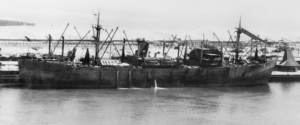
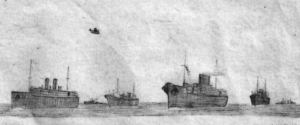
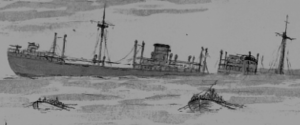
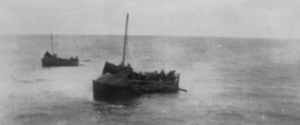
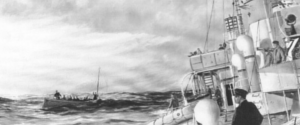
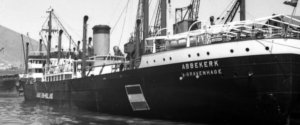



From Jaap van der Boon on Stories: A.W. Kik's memoires
2016/09/07 at 7:28 pmFrom Don on Home
2016/05/02 at 6:01 amFrom Bruce on - February 1942, Tjilatjap
2015/08/13 at 7:38 amFrom Aidan Tuckett on The Ship
2014/08/04 at 7:35 pmFrom Dave on contact
2014/03/15 at 7:33 pmFrom Dave on Home
2014/03/14 at 2:55 pmFrom Albert on - February 1942, Tjilatjap
2014/01/25 at 9:59 pmFrom Sylvia Herbert on Abbekerk's gunners (I), Lt Geoff North's story
2013/07/25 at 11:54 pmFrom adam elliott on Fragments
2013/06/05 at 9:53 pmFrom Walter on Home
2013/02/21 at 1:12 pmFrom Nigel (Wooldridge) Killeen on April 1942, Abadan
2012/07/22 at 12:25 pmFrom Anthony Galvin on Home
2012/06/11 at 10:30 pmFrom Ian Collison on Home
2012/05/10 at 7:11 pmFrom Bob Dailey on Home
2011/08/09 at 2:47 amFrom Peter on contact
2011/07/06 at 5:28 amFrom Roy Terry on contact
2011/06/29 at 5:35 pmFrom Jim Crane on Home
2011/03/27 at 6:33 amFrom Sergey on contact
2010/12/12 at 2:48 pmFrom Dave W. Campbell on contact
2010/10/27 at 12:54 amFrom Gerrit Bon on - February 1942, Tjilatjap
2009/12/08 at 11:29 pmFrom Peter on The Ship
2009/11/30 at 8:17 pmFrom kyle on The Ship
2009/11/29 at 11:11 pmFrom kyle on The Ship
2009/11/29 at 11:08 pmFrom Sylvia Herbert nee Whimster on Abbekerk's gunners (I), Lt Geoff North's story
2009/11/11 at 7:11 pmFrom M.F. van der Starre on contact
2009/06/15 at 6:34 amFrom Peter on The Sinking of Abbekerk and other war memories (Dutch)
2009/06/12 at 1:16 pmFrom Wicher van de Veen on Home
2009/05/19 at 7:33 pmFrom Wicher van de Veen on Epilogue
2009/05/19 at 7:33 pmFrom on Home
2009/05/07 at 7:57 pmFrom Peter on The Ship
2009/04/28 at 5:40 pmFrom niels on The Ship
2009/04/25 at 2:10 pmFrom ian robinson on Tweedale's war (BBC People's War)
2009/04/09 at 10:02 pmFrom ian robinson on - February 1942, Tjilatjap
2009/03/18 at 1:17 pmFrom ian robinson on Home
2009/03/15 at 9:34 pmFrom Walter Macnab on Home
2009/02/23 at 3:17 pmFrom Peter on March 1942, Fremantle
2009/01/28 at 3:00 pmFrom Peter on July 1940, Belfast
2008/11/26 at 12:03 pmFrom Peter on Pictures
2008/09/03 at 7:15 pmFrom Peter on March 1941, London
2008/07/29 at 7:23 amFrom Peter on April 1941, Liverpool
2008/04/12 at 3:19 pmFrom Peter on - February 1942, Tjilatjap
2008/04/12 at 3:12 pmFrom Peter on November 1941, Gourock
2008/01/25 at 7:24 pmFrom Wiebe Visser on contact
2007/12/30 at 8:12 pmFrom Berend on Contact
2007/12/17 at 9:17 pmFrom William Vroombout on Home
2007/12/06 at 8:37 pmFrom Lynn Barkus on Home
2007/11/08 at 11:43 amFrom Jan Vel on Home
2007/08/28 at 7:33 amFrom adam elliott on Home
2007/08/14 at 10:36 amFrom Adm Gurita on Home
2007/08/02 at 10:18 pmFrom Oscar M. Rudie on Home
2007/07/18 at 6:38 am